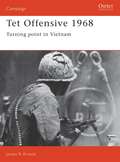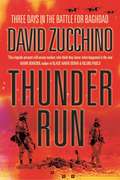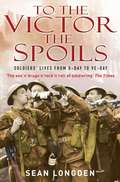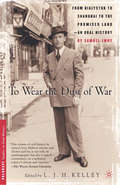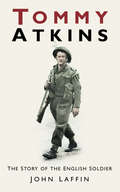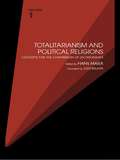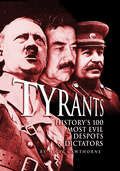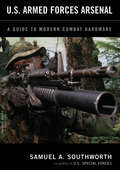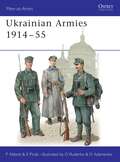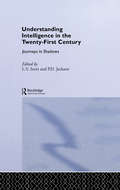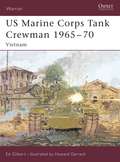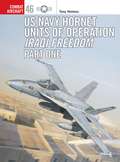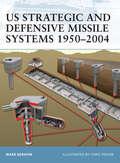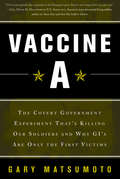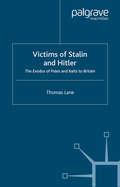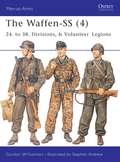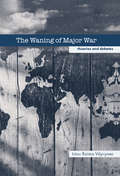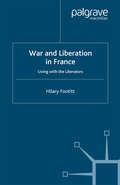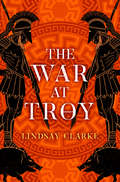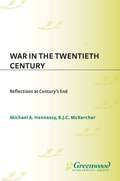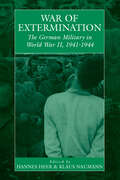- Table View
- List View
Tatiana and Alexander: Tatiana And Alexander's Life Of Food And Love (The\bronze Horseman Ser. #2)
by Paullina SimonsA powerful story of grief, hope and an epic love, from the Russian-born author of internationally bestselling novels, TULLY and ROAD TO PARADISE.
Tet Offensive 1968: Turning point in Vietnam (Campaign)
by James ArnoldThe 1968 Tet Offensive was the decisive battle for Vietnam. Masterminded by the brilliant North Vietnamese General, Vo Nguyen Giap, it was intended to trigger a general uprising in South Vietnam. However, the bloody fighting for Saigon, Hue and other cities actually resulted in a catastrophic defeat for the North. In this excellent assessment of the key battle of the Vietnam conflict, James Arnold details the plans and forces involved and explains how, despite the outcome of the battle, the American people and their leaders came to perceive the war for Vietnam as lost.
Thunder Run: The Armored Strike to Capture Baghdad
by David ZucchinoThunder Run is the story of how, with fewer than a thousand men, and facing dug-in Iraqi forces, the Second ('Tusker') Brigade of the Third Infantry Division punched a hole through the heart of Baghdad with a high-speed charge to Saddam Hussein's Presidential Palace and Republican Guard headquarters.The product of dozens of interviews with commanders and men from the Second Brigade, it is more than just a book about a single battle. It is a riveting account of how soldiers respond under fire and and how human frailties are magnified in a war zone. Many people believe that Baghdad was taken with a minimum of effort. But for the Tusker Brigade it was a cruel and terrifying three days of urban warfare. Thunder Run tells the inside story of one of the most brutal and decisive battles in combat history and the biggest armoured battle involving American troops since the Vietnam War. It is an unputdownable, unforgettable first-hand account of how a single armoured brigade of fewer than a thousand men captured an Arab capital defended by one of the world's largest armies.
To the Victor the Spoils: D-day And Ve Day, The Reality Behind The Heroism
by Sean LongdenFrom the D-Day landings in June 1944 to the final declaration of peace the following year the Allied forces fought a bitter battle to the end against Hitler's Nazi Germany. Sean Longden re-tells the unexpected true story of life among the ranks of Field Marshall Montgomery's 21st Army group and reveals a tale of sex, burglary, rape, pillage and alcohol. Uncovering new material from interviews, documents and personal accounts, Sean Longden recounts what really happened on the road to Berlin. 'A meticulously-researched, utterly absorbing account of the human story behind the battle to crush Hitler's forces.' Yorkshire Post
To Wear the Dust of War: From Bialystok to Shanghai to the Promised Land, an Oral History (Palgrave Studies in Oral History)
by S. IwryLike many European Jews, Sam Iwry began his life in Poland, but at the age of ten fled with his family to Russia before World War I. At age 29, Iwry was forced to flee again - this time from the Soviets - and ended up in Shanghai, China, joining 20,000 Jewish refugees who were there. The story of the Diaspora caused by the Holocaust is well-known, but the Far Eastern dimension has come to light only very recently. Iwry is a magnificent storyteller who not only brings the harrowing details of flight and survival into vivid detail, but he is also an historian who deliberately places his own experiences into much wider context. This oral history sheds light on Jewish life in Eastern Europe during the inter-war period, the search for a safe haven from Nazis and Soviets, daily life in the Shanghai ghetto, and emigration to America. Iwry's story is both representative of the Jewish experience and also completely unique.
Tommy Atkins: The Story of the English Soldier
by John LaffinTommy Atkins is the English soldier, who joking broke the cavalry of France at Minden, who singing marched with the Great Duke of the Danube, who grumbling shattered Napoleon's dream at Waterloo, who sweating in his red coat tramped back and forth across Indis, who kept his six-rounds-to-the-minute at Mons, and who died in the mud at Passchendaele, the sands of the Western Desert, and the jungles of Burma. If his name has been eclipsed by his more illustrious commanders - Cromwell, Marlborough, Moore, Wolfe, Wellington, Allenby, Slim - they at least will accord him his rightful place beside them. They knew his worth. Tommy Atkins is his story - the story of this most versatile, most adaptable, most unmilitary soldier.
Totalitarianism and Political Religions, Volume 1: Concepts for the Comparison of Dictatorships (Totalitarianism Movements and Political Religions)
by Hans MaierWe are used to distinguishing the despotic regimes of the 20th century - communism, fascism, National Socialism, Maoism - very precisely according to place and time, origins and influences. But what should we call that which they have in common? On this question, there has been and is still a passionate debate.This book documents the first international conference on this theme, a conference that took place in September of 1994 at the University of Munich. The book shows how new models for understanding political history arose from the experience of modern despotic regimes. Here, the most important concepts - totalitarianism and political religions - are discussed and tested in terms of their usefulness.
Totalitarianism and Political Religions, Volume 1: Concepts for the Comparison of Dictatorships (Totalitarianism Movements and Political Religions)
by Hans MaierWe are used to distinguishing the despotic regimes of the 20th century - communism, fascism, National Socialism, Maoism - very precisely according to place and time, origins and influences. But what should we call that which they have in common? On this question, there has been and is still a passionate debate.This book documents the first international conference on this theme, a conference that took place in September of 1994 at the University of Munich. The book shows how new models for understanding political history arose from the experience of modern despotic regimes. Here, the most important concepts - totalitarianism and political religions - are discussed and tested in terms of their usefulness.
Tyrants: History's 100 Most Evil Despots & Dictators
by Nigel Cawthorne"I have committed many acts of cruelty and had an incalculable number of men killed, never knowing whether what I did was right. But I am indifferent to what people think of me."- Genghis KhanA spine-chilling chronicle of dictators and their crimes against humanity, Tyrants introduces the most bloodthirsty madmen - and women - ever to wield power over their unfortunate fellow human beings.From Herod the Great, persecutor of the infant Jesus, to Adolf Hitler, mass murderer and instigator of the most devastating war the world has ever known, this book examines history's most infamous despots and tells in vivid detail the story of the lives they led, their ruthless climb to the top and the destruction and sorrow they left in their wake.Unflinching in its coverage, Tyrants is a gripping and compelling portrait of the darker side of politics and power, revealing the strange and grisly stories behind the world's most infamous autocrats.
U.S. Armed Forces Arsenal: A Guide To Modern Combat Hardware
by Samuel A. SouthworthToday's arsenal of war contains some of the most sophisticated weapons ever seen on the battlefield. The technological revolution has drastically altered how war is fought and brought about the invention of some highly unusual (and effective) weapons. In the recent war with Iraq, we caught a glimpse of the new high-tech weapons in America's arsenal and the wide-ranging array of modern equipment and transportation used by our armed forces. America's modern military hardware is the envy -and fear-of the world.In U.S. Armed Forces Arsenal, noted military historian Samuel A. Southworth takes the reader on an informal and informative guided tour of this new arsenal of weaponry. He explains in clear and concise prose the new generation of military hardware, from rifles to mortars, jeeps to tanks, robotic drones to night vision sensors, and all manner of bombs, missiles and rockets-the arms and armaments that have reshaped the way the U.S. goes to war, on land and sea and in the air.
Ukrainian Armies 1914–55 (Men-at-Arms #412)
by Peter Abbott Eugene PinakThere can be no region in Europe whose history has been more tortured than Ukraine. During the 20th century Austria, Poland, Russia, Germany, Hungary, Czechoslovakia and Romania vied for power over parts of this vast and fragmented area; and its divided peoples rose time and again in vain attempts to win their independence. For the first time in the West, this book gives a succinct summary of all the different armed forces raised among the Ukrainians, and of their uniforms and insignia. These are illustrated in colour and in a selection of extremely rare photographs, dating from the Great War to the aftermath of World War II, when Ukrainian guerrillas continued to defy the Soviet authorities until the mid-1950s.
Understanding Intelligence in the Twenty-First Century: Journeys in Shadows
by Peter Jackson L. V. ScottOver the past few decades, international history and security have been significantly influenced by greater understanding of the role of intelligence in national security and foreign policy-making. In Britain, much of the work has developed in the subdiscipline of international history with its methodological predisposition towards archive-ba
Understanding Intelligence in the Twenty-First Century: Journeys in Shadows (Studies In Intelligence Ser.)
by L. V. Scott P. D. JacksonOver the past few decades, international history and security have been significantly influenced by greater understanding of the role of intelligence in national security and foreign policy-making. In Britain, much of the work has developed in the subdiscipline of international history with its methodological predisposition towards archive-ba
US Marine Corps Tank Crewman 1965–70: Vietnam (Warrior #90)
by Ed GilbertBy 1960, following Korea, tanks and their crews had proved themselves to be a fundamental part of the Marine Corps' combined arms team. When the Marines were ordered to Vietnam in 1965, they took their tanks with them. This book explores this decision, which created a political storm. The presence of the tanks became a lightning rod for accusations of an 'escalation' of the war. Nevertheless, the tanks not only proved their value in the anti-guerrilla campaigns, but also amid the bitter conventional fighting and extraordinary casualties at Hue City. The ability to undertake such radical change and to prevail demonstrated the versatility, courage and tenacity that are the hallmarks of the 'ordinary' Marine.
US Navy Hornet Units of Operation Iraqi Freedom (Combat Aircraft #46)
by Tony Holmes Chris DaveyThe F/A-18 Hornet in its various guises was the 'universal soldier' of OIF, with around 250 seeing combat. Flown by various squadrons and groups, the Hornet attacked a range of targets including tanks of the various Iraqi Republican Guard units and government buildings housing elements of the Baath party regime. Apart from its ability to drop precision munitions such as laser-guided bombs, the Hornet was also capable of launching anti-radar missiles and acting as an aerial tanker and reconnaissance platform for other strike types. This book explores the Hornet's versatility which has enhanced its reputation as one of the world's leading strike-fighter aircraft.
US Strategic and Defensive Missile Systems 1950–2004 (Fortress #36)
by Mark BerhowFor 40 years following the end of World War II, the Western democratic governments and the Eastern Bloc Communist powers were locked in the ideological, political, and economic struggle of the Cold War. The United States and the Soviet Union developed missile systems capable of delivering conventional and nuclear explosives against enemy massed bomber formations in the air, and of delivering retaliatory nuclear payloads against ground targets located on distant continents. The missile systems played both a defensive role, and a potential offensive role, which was parlayed to the public as deterrence against attack by the rival bloc. This title provides a detailed overview of the fixed-launch-site strategic missile systems of the United States.
Vaccine A: The Covert Government Experiment That's Killing Our Soldiers--and Why GI's Are Only the First Victim
by Gary MatsumotoIn this provocative look at the US military from the Persian Gulf War through the 2003 invasion of Iraq, investigative journalist Gary Matsumoto contends that an anthrax vaccine dispensed by the Department of Defense was the cause of Gulf War Syndrome and the origins of a massive cover-up. Matsumoto calls it the worst friendly-fire incident in military history. A skillfully-woven narrative that serves as a warning about this man-made epidemic, Vaccine A is a much needed account of just what went wrong, and why.
Victims of Stalin and Hitler: The Exodus of Poles and Balts to Britain
by T. LaneIn contemporary Britain there are substantial ethnic minorities of Polish and Baltic origin, who arrived here shortly after World War II. Using official records and the words of survivors and their children, the author explores the reasons for their savage uprooting at the hands of Stalin and Hitler, their subsequent odysseys, and the reasons for their resettlement in Britain. This is a study of totalitarianism, political asylum, and the relationship of ethnic minorities to the host society, combining first-hand accounts with historical analysis.
The Waffen-SS: 24. To 38. Divisions, And Volunteer Legions (Men-at-arms Ser. #420)
by Gordon WilliamsonIn 1944–45 the Waffen-SS formed many nominal 'divisions' from a motley range of sources, whose battlefield value was as varied as their backgrounds. The best were built around existing Western European volunteer regiments; some, raised from Central Europeans and Russians, were strong in numbers but weak in morale; some were of negligible size, scraped together from remnants and trainees; and some were sinister 'anti-partisan' gangs, assembled from the military dregs of the Eastern Front. Illustrated with rare photographs from private collections and meticulous colour artwork, this final title in our sequence details their organisation, uniforms and insignia, and summarises their battle records.
The Waning of Major War: Theories and Debates (Contemporary Security Studies)
by Raimo VäyrynenThis book is a systematic effort by leading international scholars to map the trends in major-power warfare and explore whether it is waxing or waning. The main point of departure is that major-power war as a historical institution is in decline. This does not mean, though, that wars between states are in general disappearing. While there is some convergence in the conclusions by individual authors, they are by no means unanimous about the trend. The articles explore different causes and correlates of the declining trend in major-power warfare, including the impact of the international structure, nuclear weapons, international law, multilateral institutions, sovereignty and value changes.
The Waning of Major War: Theories and Debates (Contemporary Security Studies)
by Raimo VayrynenThis book is a systematic effort by leading international scholars to map the trends in major-power warfare and explore whether it is waxing or waning. The main point of departure is that major-power war as a historical institution is in decline. This does not mean, though, that wars between states are in general disappearing. While there is some convergence in the conclusions by individual authors, they are by no means unanimous about the trend. The articles explore different causes and correlates of the declining trend in major-power warfare, including the impact of the international structure, nuclear weapons, international law, multilateral institutions, sovereignty and value changes.
War and Liberation in France: Living with the Liberators
by H. FootittThis book, coinciding with the sixtieth anniversary of the Liberation of France, takes a unique approach to the events of 1944, by seeing them as shared experiences which brought ordinary Anglo-Americans and French people into contact with each other in a variety of different communities. The book looks at the Liberation through 5 case-studies: Normandy, Cherbourg, Provence, the Pyrénées-Orientales and Reims, and uses the words of participants at the time to describe the developing relationship between Liberators and Liberated.
The War at Troy (The Troy Quartet #2)
by Lindsay ClarkePART TWO OF THE TROY QUARTET Bringing ancient myth to life with passion, humour, and humanity, Lindsay Clarke vividly retells the story of Troy and of the heroes who fought there.
War in the Twentieth Century: Reflections at Century's End (Praeger Studies in Diplomacy and Strategic Thought)
by Michael A. Hennessy B. J. C. MckercherWar proved a seminal influence on the shape of the 20th century. This collection provides various essays addressing the phenomenon of war as viewed through the eyes of the fin de siecle. Leading scholars of war, international relations, and international law offer general or specific insights into war's consequences during the last one hundred years. Combined, the essays demonstrate the centrality of 20th century war to the development of the modern state system, international jurisprudence, and contemporary society.Donald Watt provides an overview of the use of the term war in its legal and practical sense. John Lynn addresses the transformation of military professional forces through the century. Donna Arzt explores the slow convergence of humanitarian law with human rights laws as witnessed in the latter half of the century. The contours of the national security state that emerged in many forms through the late century are detailed in contributions by Lawrence Aronsen, Geoffrey Smith, and Gary Hess. Finally, efforts to avert war through arms control, disarmament, arms reduction, and peace-keeping are examined in essays by Norman Hillmer and Erik Goldstein.
War of Extermination: The German Military in World War II (War and Genocide #3)
by Hannes Heer Klaus NaumannAmong the many myths about the relationship of Nazism to the mass of the German population, few proved more powerful in postwar West Germany than the notion that the Wehrmacht had not been involved in the crimes of the Third Reich. Former generals were particularly effective in spreading, through memoirs and speeches, the legend that millions of German soldiers had fought an honest and "clean" war and that mass murder, especially in the East, was entirely the work of Himmler's SS. This volume contains the most important contributions by distinguished historians who have thoroughly demolished this Wehrmacht myth. The picture that emerges from this collection is a depressing one and raises many questions about why "ordinary men" got involved as perpetrators and bystanders in an unprecedented program of extermination of "racially inferior" men, women, and children in Eastern Europe and the Soviet Union during the Second World War. Those who have seen these terrible photos of mass executions and other atrocities, currently on show in an exhibition in Germany and soon to be in the United States, will find this volume most enlightening.

